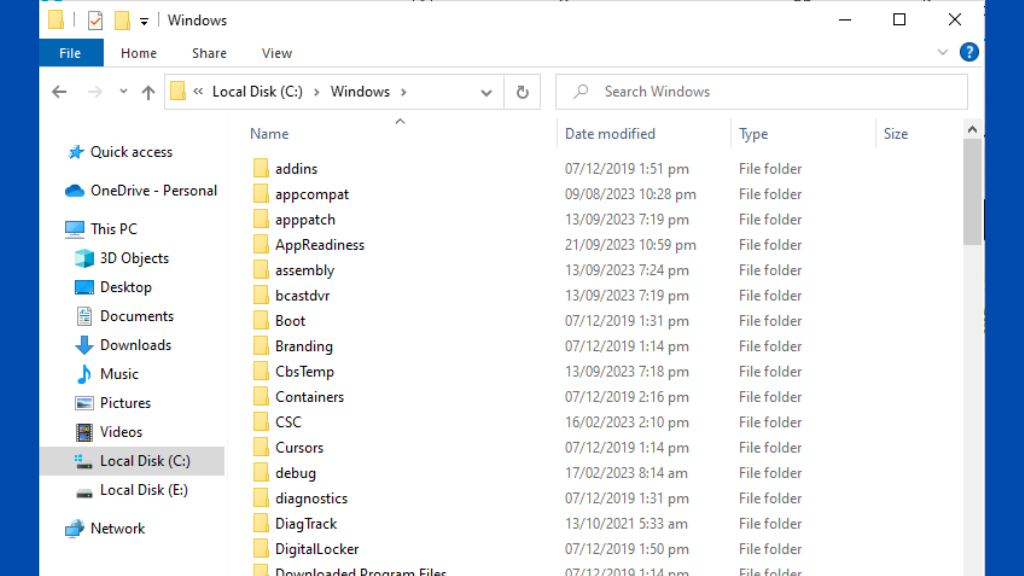
In the digital age, maintaining the performance of your Windows PC is essential. Over time, various files and folders accumulate, potentially affecting your computer’s speed and efficiency. One such folder that often goes unnoticed but can significantly impact your PC’s performance is the Windows Installer Folder. In this article, we’ll explore what the Windows Installer Folder is, why it’s important to clean it up, and how to do so effectively.
what is Windows Installer Folder
In this fast-paced digital world, where efficiency and speed are paramount, a sluggish computer can be a significant hindrance. The Windows Installer Folder, often overlooked, plays a crucial role in your computer’s overall performance. Let’s dive deeper into what this folder is and why you should consider cleaning it up.
Understanding the Windows Installer Folder
The Windows Installer Folder, also known as WinSxS (Windows Side by Side), is a vital component of the Windows operating system. It stores essential files required for installing, updating, and maintaining Windows components and applications. While these files are necessary for system integrity, they can accumulate over time, taking up valuable disk space.
Why Clean Up the Windows Installer Folder?
Cleaning up the Windows Installer Folder is essential for several reasons:
- Freeing Up Disk Space: As the folder grows, it can consume a substantial amount of disk space, potentially leading to low storage issues.
- Improving System Performance: A bloated Windows Installer Folder can slow down your PC, affecting startup times and application responsiveness.
- Enhancing System Stability: Reducing unnecessary files can improve the overall stability and reliability of your Windows system.
Identifying Unnecessary Files
Before you begin the cleanup process, it’s crucial to identify which files can be safely removed. Windows provides tools and commands to assist in this task, ensuring you don’t delete critical system files.
Manual Cleanup Process
Cleaning the Windows Installer Folder manually involves using built-in Windows tools such as Disk Cleanup and the Deployment Imaging Service and Management Tool (DISM). We’ll guide you through the steps to ensure a safe cleanup process.
Automated Cleanup Tools
For those who prefer a more automated approach, various third-party tools are available that can help you clean up the Windows Installer Folder efficiently. We’ll discuss some popular options and their benefits.
Safety Precautions
It’s crucial to take precautions when cleaning the Windows Installer Folder to avoid accidental deletion of critical files. We’ll outline safety measures to ensure a smooth cleanup process.
Monitoring Disk Space
To prevent future accumulation of unnecessary files in the Windows Installer Folder, we’ll provide tips on how to monitor disk space effectively and maintain your PC’s performance.
Conclusion
In conclusion, the Windows Installer Folder is a critical component of your Windows operating system, and regular maintenance is essential. Cleaning up this folder can free up valuable disk space, improve system performance, and enhance system stability. Whether you choose to do it manually or use automated tools, keeping your Windows Installer Folder tidy will contribute to a smoother computing experience.
Is it safe to delete all files in the Windows Installer Folder?
While it’s safe to remove unnecessary files from the Windows Installer Folder, it’s essential to use built-in Windows tools or trusted third-party software to ensure you don’t delete critical system files.
How often should I clean up the Windows Installer Folder?
Cleaning up the Windows Installer Folder is recommended periodically, especially when you notice a decrease in system performance or low disk space warnings.
Can I recover deleted files from the Windows Installer Folder?
Once you delete files from the Windows Installer Folder, they are typically unrecoverable. Therefore, it’s essential to exercise caution when performing cleanup actions.
Are there any risks associated with using third-party cleanup tools?
Using reputable third-party cleanup tools is generally safe, but there is a slight risk of inadvertently deleting necessary files. Always follow instructions and backup critical data before using such tools.
Will cleaning the Windows Installer Folder speed up my PC noticeably?
Cleaning the Windows Installer Folder can lead to improved system performance, but the extent of improvement may vary depending on the initial state of your PC and the amount of clutter in the folder.
Related Articles:
How To Create a Virtual USB Drive in Windows
How to Clean Up Windows Installer Folder for Improved Performance.
